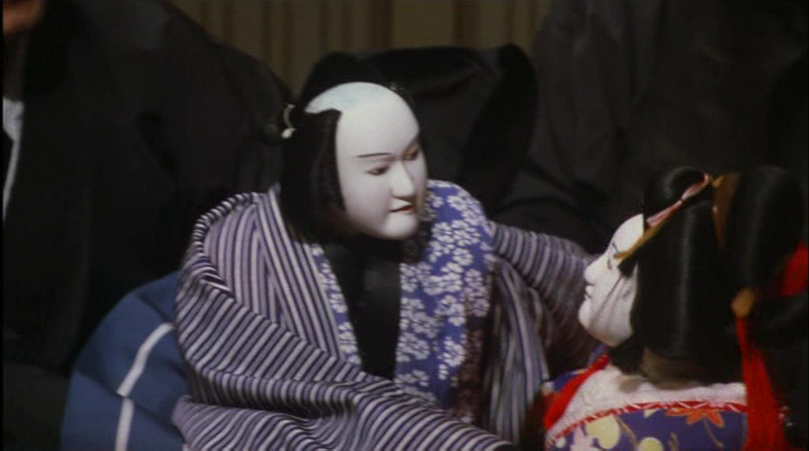Bunraku, the traditional Japanese puppet theater (ningyo joruri) has a 400 year history. Bunraku was originally just the name of a theater troop that performed puppetry, but over time, the word evolved to indicate ningyo joruri itself, and it is now the official name of this form of puppetry. It is a style peculiar to Japan, in which the recitations of a male narrator, shamisen music performance and puppetry are united.
Bunraku features the superior literariness of gidayu, a style of reciting dramatic narratives, the highly qualified musicality, artistry, and dynamic sound of the thick-necked shamisen and the technique required for 3 puppeteers to handle 1 puppet (in Chikamatsu's time, puppets were smaller than they currently are, so each puppet was handled by one puppeteer). Its high quality and sensitive expressiveness and interpretation describe feelings of affection in a realistic manner.
Additionally, the precision of the heads, wigs and clothing of the puppets, together with the set decorations, lighting and sound effects blend to create a peculiar beauty in the theater space. Those who have seen this form of puppetry say it's unparalleled anywhere in the world, and it often overwhelms the audience.
This is a bunraku puppet theater scene from "Meido no Hikyaku " (Messenger from Hell) that opens a movie by legendary director and actor Takeshi Kitano. The puppet show does have very poetic narration. Since overlaying the subtitle takes too much time that I do not currently have, below you can read the words that accompany the puppets' actions...
The scene depicts a messenger distressed because his beloved is being sold to another man, while the courtesan laments the fact that the other man wanted to buy her with money. Bunraku uses several operators in luxurious kimonos: A story teller, the "tayu." The singer "joruri" sits behind the scene and interprets all the characters in the play. The music is by a sole musician playing a "shamisen" which is a kind of three string guitar. The musician not only plays the music score but he also creates sound effects such as rain, wind etc... Each puppet which can be as large as 4' or 5' is handled by three male operators. The Master Operator "omozukai" appears full face and he takes care of the facial expressions of the puppet (movements of the eyes, eye brows and mouth which can all move;) and the right arm. His first assistant handles the left arm and his second assistant is in charge of the legs, or the clothing of the female characters who do not have legs. The assistants wear black and black hoods.
Here are the words of "Messenger from Hell:"
I beg you
Calm your heart
Do not be a slave
To such miserable feelings
Who has put you in this state?
No one else...
No other than I...
I, Umekawa...
I am to blame for all
Should I be grateful?
Or should I lament?
I don't know
Cries...
Read my heart
Bowed in touching distress
She cried anguish tears
Onto the pieces of gold
The coins soon resembled
Beautiful and bright kerria flowers
All covered with dew
Bathed in her tears
The coins sparkled brilliantly
Second act...
....
Honor, glory and fortune
Are only fleeting grains of sand
Their traces become dust
Scattered on the roads to Yamato
To be forever trampled on.




No comments:
Post a Comment